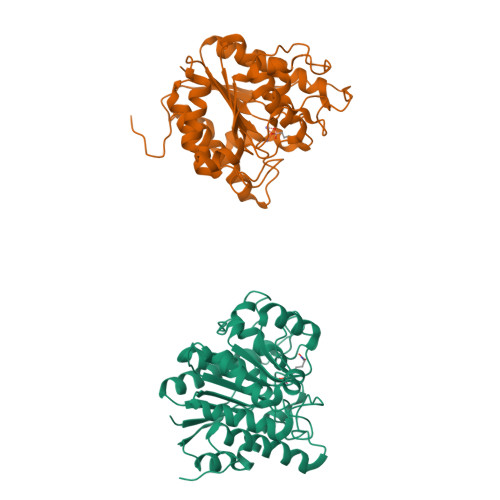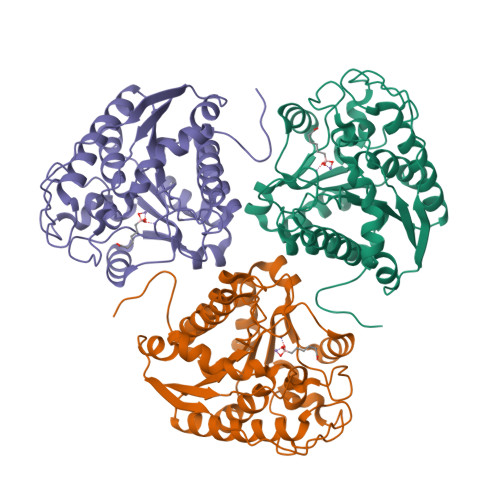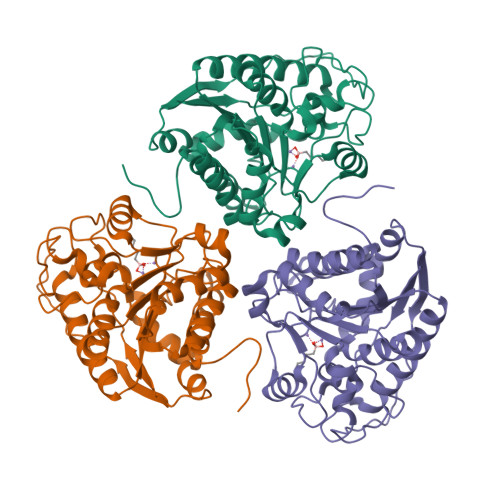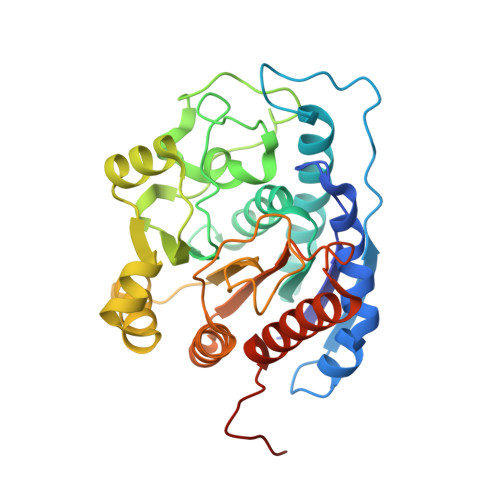Arginase-boronic acid complex highlights a physiological role in erectile function.
Cox, J.D., Kim, N.N., Traish, A.M., Christianson, D.W.(1999) Nat Struct Biol 6: 1043-1048
- PubMed: 10542097
- DOI: https://doi.org/10.1038/14929
- Primary Citation of Related Structures:
1D3V - PubMed Abstract:
The crystal structure of the complex between the binuclear manganese metalloenzyme arginase and the boronic acid analog of L-arginine, 2(S)-amino-6-boronohexanoic acid (ABH), has been determined at 1.7 A resolution from a crystal perfectly twinned by hemihedry. ABH binds as the tetrahedral boronate anion, with one hydroxyl oxygen symmetrically bridging the binuclear manganese cluster and a second hydroxyl oxygen coordinating to Mn2+A. This binding mode mimics the transition state of a metal-activated hydroxide mechanism. This transition state structure differs from that occurring in NO biosynthesis, thereby explaining why ABH does not inhibit NO synthase. We also show that arginase activity is present in the penis. Accordingly, the tight binding and specificity of ABH allows us to probe the physiological role of arginase in modulating the NO-dependent smooth muscle relaxation required for erection. Strikingly, ABH causes significant enhancement of nonadrenergic, noncholinergic nerve-mediated relaxation of penile corpus cavernosum smooth muscle, suggesting that arginase inhibition sustains L-arginine concentrations for NO synthase activity. Therefore, human penile arginase is a potential target for therapeutic intervention in the treatment of erectile dysfunction.
Organizational Affiliation:
Roy and Diana Vagelos Laboratories, Department of Chemistry, University of Pennsylvania, Philadelphia, Pennsylvania 19104-6323, USA.





















